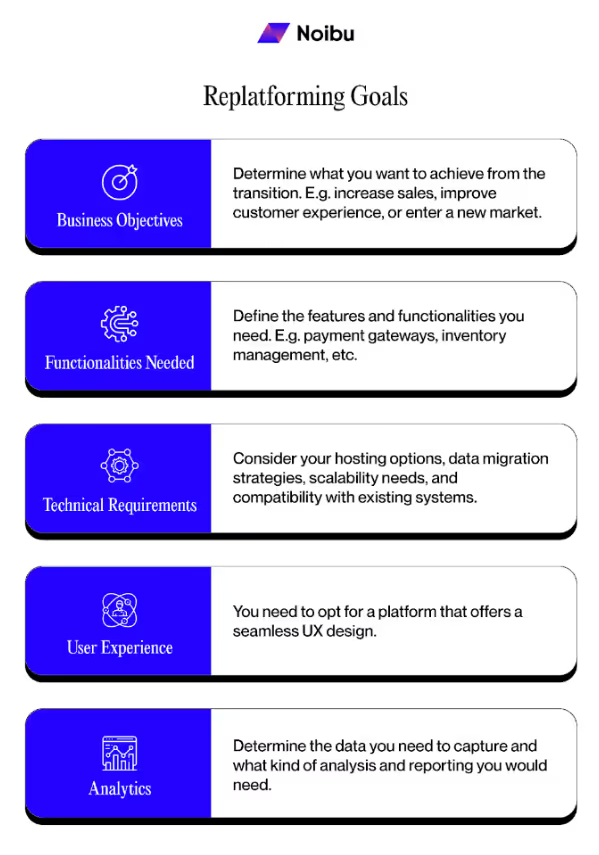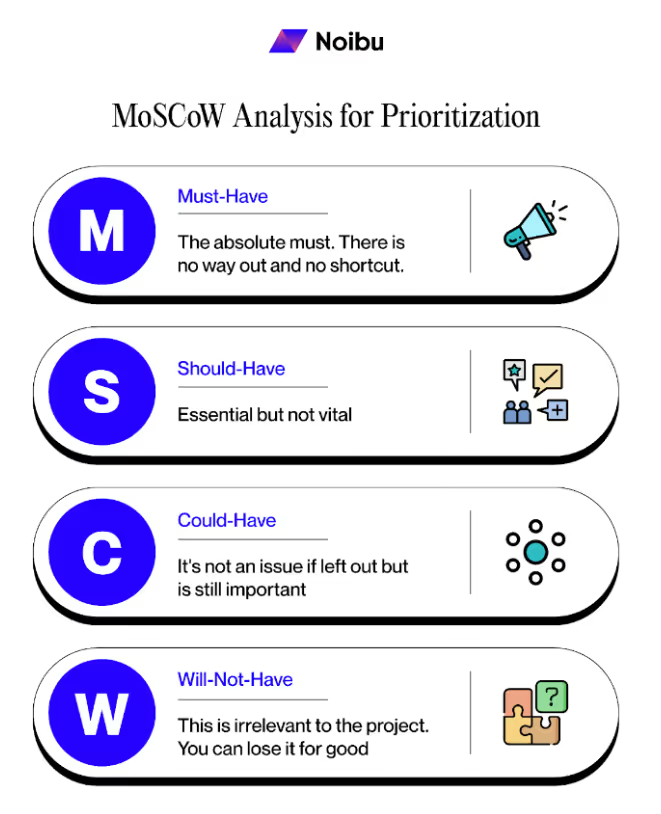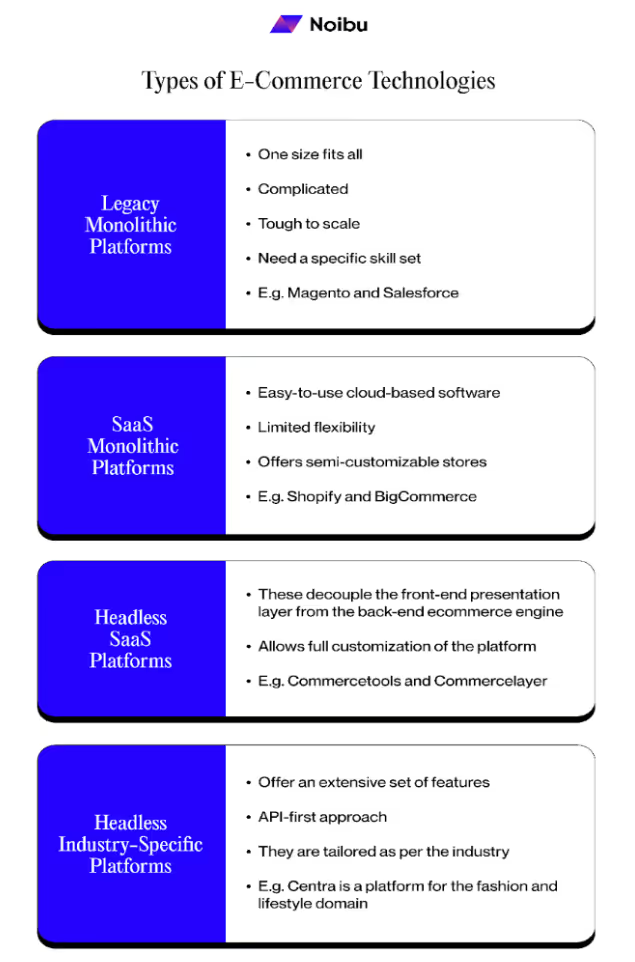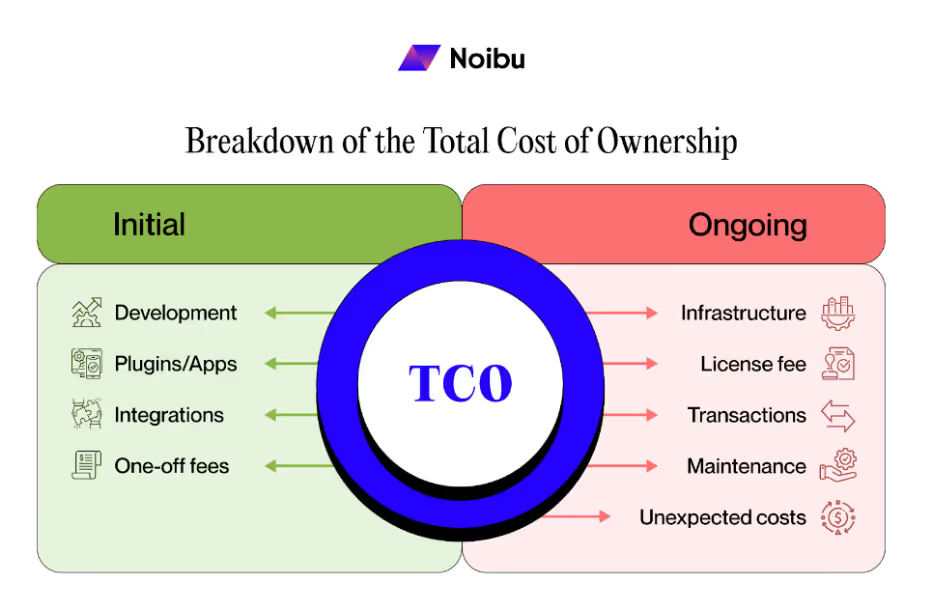11-step ecommerce replatforming checklist for a seamless transition

As an ecommerce business looking to thrive, scale, and grow in today’s market, you’ve probably had to make a decision to replatform your legacy ecommerce system or might be considering it at some point down the road. It’s a necessary evil to keep up with evolving consumer needs and growing business requirements.
For instance, if you’ve been facing repeated issues with website performance during the holiday season when traffic is higher than usual and it’s not something third-party support has been able to resolve, you might need to consider moving to a different platform that better aligns with your business needs.
If this sounds relatable, you are not alone!
In such a situation, ecommerce replatforming can be the turbo fuel to boost your online store’s loading speed, enhance flexibility and capabilities, improve the performance and shopping experience, and boost revenue.
However, replatforming includes a high initial price of the new software and the cost of expert help. Even if you decide to go for a custom platform, you need to invest a considerable amount of time, effort, and money to ensure it sets your business up for success. Hence, without proper planning, you run the risk of going way beyond your budget and making costly mistakes.
Here’s a detailed ecommerce replatforming checklist to ensure a hassle-free migration while averting risks to your online presence, data accuracy, or security.
11-step ecommerce replatforming checklist
Assessing the current ecommerce platform
Evaluating your existing ecommerce platform is critical to determining the level of performance, functionality, and scalability you are looking for.
Consider elements like stability, reliability, peak traffic management ability, integration capabilities, UX, security features, customization options, mobile device support, and more.
Here’s a quick view into the points you must consider.
Performance: Evaluate the website speed. Does it ensure optimal performance and shopper experience?
Functionality: Does your existing platform offer the functionalities your business needs? For instance, payment options, content management, SEO, and others.
Scalability: Check if your current platform can manage traffic peaks during offers or the holiday season. Does the platform compromise website performance during a spike in traffic?
Integrations: Check if your platform allows easy integration with other systems, third-party applications, and back-end channels like accounting, inventory, sales, ERP, CRM, and marketing. Are there any other third-party capabilities the platform is not able to integrate with?
User Experience: What kind of UX design does the platform offer? Does it make the experience engaging, enjoyable, and seamless for the end users? Do you have design freedom? Are you satisfied with your storefront? What do you think about the current front-end technology? Do you like your current checkout? What does your team think of the current user journey?
Security: Take a look at the security measures implemented by the platform to protect sensitive data. Does it offer data encryption and privacy? Does it implement an SSL certificate? Inspecting the above elements will help you identify the gaps that need to be fixed during your ecommerce replatforming. This will not only form a foundation for a successful transition but also help in getting buy-in for the next platform from leadership.
Based on your analysis define your precise requirements and what you wish to achieve from this replatforming project. Here’s a graphic to help you.
Project set-up and governance
Setting up a clear project structure for ecommerce replatforming is central to getting the buy-in from all the stakeholders—internal and external.
What guiding principles are you planning to include? What can ensure that all parties involved at this stage agree unanimously on realistic and achievable goals?
Here are a few points you should consider when adding structure and discipline to your ecommerce replatforming project.
- Determine the digital vision for your business that informs every decision throughout the process.
- Create an initial project scope. Consider factors like existing functionalities, technical considerations, key features of the new platform, user experience, brand engagement deliverables, analytics and reporting, and more.
- Collect input from the team and all stakeholders about the potential risks. Create a RAID log to track the Risks, Actions, Issues, and Decisions.
- Work with the concerned stakeholders to define goals and KPIs to measure success. It could be a 15% increase in revenue within one fiscal year or a decrease in maintenance costs six months post-launch. These goals steer decisions related to platform selection, site functionality, marketing efforts, user experience, and more.
- Decide on the communication process and channels you will follow and the tools needed.
- Define reporting mechanisms and frequency. Set responsibilities, reporting mechanisms, and reporting tools.
The pointers shared above will help you create a governance charter for the project that must be shared with all the stakeholders.

Finalize project budget and scope
Now is the time to set parameters for your replatforming project. Begin with a budget in mind. Here are a few tips for getting started.
- Determine the upfront cost of the replatform. Include all the costs involved in building and customizing the existing platform over the past three or more years. Include agency service fees, platform costs, licensing, hosting, developer costs, and more.
- Build in contingency plan to cover unforeseen expenses or scope creep if any.
- Consider the amount signed off by the financial director and agree/sign off on a realistic budget for the transition.
- Include all the stakeholders when setting KPIs to measure success.
- Agree on a prioritization criteria for the project’s scope. For instance, the MoSCow prioritization presents initiatives in 4 categories: must-have, should-have, could-have, and won't-have, or will not have right now.
- Similarly, the Eisenhower Matrix allows you to prioritize based on the urgency and importance of the initiatives.
Once you have agreed on the scope and the prioritization criteria, get the scoping document approved and signed off by the project lead.
Here are a few key questions your team should ponder at this stage.
- How much are you willing to spend on the new platform?
- What are your CapEx capabilities?
- What are our OpEx capabilities?
- How do you see your revenue improve over the next 3-5 years?
- Will third-party costs come from a separate budget?
- Where can consultants be accounted for in the budget?
- Will marketing audits be paid from the marketing budget or the replatforming budget?

Research and choose the new platform
When looking for a new ecommerce platform, you must go beyond the basics. For instance, if you are a large-scale multi-vendor business, you will need a platform that offers quick technical support and assists you with complex ecommerce functionalities.
You also need to decide whether to go for an off-the-shelf platform or a headless/ composable platform. Here’s some quick information on this matter to help you decide.
Off-the-shelf ecommerce platforms
These are a piece of readymade software that can be purchased and installed right away. They have been developed and tested successfully on several businesses.
Advantages
- Affordability: Off-the-shelf enterprise solutions are cost-effective compared to custom ones because the development cost is shared among multiple users.
- Quick Deployment: Since these are pre-built, they assure quick deployment with a large library of existing templates and features.
- Great Support: Since these solutions see regular updates and security patches from the provider, they are usually up-to-date with the latest features. Vulnerabilities are promptly addressed.
Disadvantages
- Limited Scope for Customization: These solutions come with pre-defined features and templates. So, ecommerce companies have less control over the design, layout, or functionality, hindering their ability to create unique experiences.
- Lack of Scalability: These solutions do not offer the scalability needed for long-term growth. Since customization options are limited, it’s tough to accommodate specific requirements as the business evolves.
- Over-Dependency on the Provider: Businesses often have to rely on the provider for updates, bug fixes, and support. This ultimately impacts your ecommerce store performance.
Headless and composable ecommerce platforms
Headless commerce focuses on decoupling the front-end presentation layer from the back-end ecommerce functionality. However, since you are tethered to the back-end engine, you don’t have the flexibility to change the tech stack with new services.
Composable commerce is based on the modular architecture. It revolves around “composing” unique customer experiences by plugging best-of-breed building blocks/components like shopping cart, checkout, and payment processing. In both cases, the frontend delivery is not reliant on the backend, hence they offer similar features, functions, and advantages.
Advantages
- Offers Flexibility: Since the front and back ends are decoupled, it offers businesses more control over their stack. For instance, in composable commerce, they can pick, swap, and remove components to create systems that work best for them.
- High Cost-Effectiveness: Both work on the pay-as-you-go model. They eliminate the need to pay for things you don’t require. Hence, businesses can optimize costs based on utilization.
- Improves Scalability: Both promote agility and scalability by allowing the backend to handle heavy loads independently from the front end. Composable commerce leverages the modularity of microservices. Thus, scaling the front end or adding new channels will not impact the performance of the ecommerce platform.
- Minimizes Vendor Lock-In: The decoupling of the frontend and backend (headless) and the ability to use modular and interchangeable services (composable), allows businesses to switch providers easily. Ease of Integration - Both offer APIs for integration with third-party systems and applications.
- Encourages Experimentation: Since these platforms offer unparalleled flexibility and scalability, they encourage you to foster a culture of experimentation and take risks to continuously optimize user experiences.
- Better Control: Headless and composable platforms offer better control over your front-end customer experiences so you can deliver highly-personalized user journeys.
Disadvantages
- Increases Operational Overheads: Scaling needs careful orchestration and management. This may increase the overheads.
- Flexibility Brings in Complexity: Increased flexibility introduces complexities that demand a skilled development team to manage and integrate diverse components. To know more about this, let’s look at this graphic that sums up the 4 types of ecommerce platforms and how they compare
To make a promising decision, here are the best practices we recommend:
- Run a gap analysis to see if the platforms meet your needs versus the native platform. Create a weightage score card, showing a detailed comparison of options available.
- Shortlist at least 3 viable platforms. Review their documentation and professional reviews. Speak to industry contacts using the platform to validate platform assumptions.
- Arrange focused product demos to deep dive into how they satisfy your business requirements.
- Speak to vendors about the indicative project building cost. Review license costs. Compare all the above to building a headless platform.

Building a TCO cost model
Before any commitments are made to agencies, you need to figure out what the new platform costs over its lifecycle.
And how it compares with the other platforms. Also, what are the expected financial benefits of replatforming
Merely considering the upfront development and licensing costs isn’t enough. Create a three-to-five-year TCO (total cost of ownership) model that maps all Capex and Opex costs during the project's lifetime.

This will include software license fees, third-party software add-ons, design and implementation services, revenue sharing, cloud-hosting fees, post-launch maintenance, planned site enhancements, customer experience, marketing services, software upgrades, and security patches.
Here are a few points to remember when creating a total cost of ownership model.
- Define all project cost streams - Capex and Opex.
- Define your GMV (Gross Merchandise Value) revenue targets. This value is calculated before the deduction of any expenses. It’s a measure of the growth of the business, sharing the total value of goods sold on a marketplace over a specific period. When revenue increases, so do the expenses. A great indicator of the platform's success and sustainability is the percentage share of the GMV coming down as it should over the lifetime.
- For a smarter approach to TCO, consider company needs in 5 years, speed to market, upgrades, and flexibility of the platform. For instance, if you need to quickly launch a new ecommerce store what will be the opportunity cost of not moving fast? Similarly, determine how often upgrades are needed and the effort involved. What is the investment in upgrading? Often, it is an added six-figure investment every three years.
Measuring the business impact
Once you have evaluated all the factors shared so far, it’s time to assess how the replatforming will impact the business.
Though the new platform promises improved functionality and performance, you are bound to experience a few hiccups. The return on investment will take some time to be realized.
It’s important to consider the potential downtime and interruptions that will cross your way. Further, during replatforming, it’s not uncommon to see a negative impact on SEO performance - at least, initially.
These quick tips will help you along the way.
- Back up the old website data and metrics. If you face issues, reinstall the old version. Search engine bots will not index the pages on your test site’s URL until they’re published.
- Separate SEO migration from a website revamp. Stick to one change at a time. For instance, when migrating to a new platform, keep your website design, content, domain name, and metadata the same.
- Large ecommerce sites tend to have thousands of pages. When migrating review your existing pages and remove the dead weight.
- Map redirects one-to-one. Redirects ensure that your shoppers access the same content on new URLs while directing search engines to the new URLs.
- To avoid SEO issues, avoid redirecting 100 product URLs to a collection. Instead, invest time in mapping each product URL to the same new URL.
- Track and fix 404 errors (broken links) on your website, including those old internal links missed in your redirection strategy.
- Watch for pages with duplicate content and use canonical URLs to direct search engines to the original content.
- Submit a new XML sitemap through Google Search Console. This will speed up the indexing process.
Data migration and integration
Protecting your existing content and data is critical. First things first, back up your ecommerce data, allowing you and your customers to access it in case something goes wrong.
Data migration includes:
- Product, customer, inventory records, and past order data
- Store configurations and promotions
- Extensions and existing integrations
- Themes and custom modules
- Code customization
- Plugins migration
Further, system migration is key. You need to connect the new ecommerce platform with systems like CRM, ERP, payment gateways, and more.
Consider these points to plan and implement the perfect data migration.
- Identify the data you intend to migrate - mentioned above.
- Cleanse your data by getting rid of duplicate records, incomplete sets, errors, and outdated information. Centralize disparate legacy data systems to ensure it is accurate, actionable, relevant, and consolidated.
- During replatforming, your store may experience downtime. Make sure you give your customers a heads-up on this. For instance, leave a fun message explaining the situation or offer an alternative solution.
- Consider migrating data incrementally, allowing customers and stakeholders to view the sample sets and correct any issues.
- Consider extra factors like API compatibility and data security measures.
Design and customization
Next, it’s time to evaluate your customer experience and implement all the requirements stated in your project scope.
- For the user interface, focus on delivering pleasing, intuitive, and seamless navigation. This includes color schemes, typography, and layout.
- For brand identity pay attention to your logo, brand colors, and visual elements. Be consistent throughout the website.
- Go for a responsive design that adapts to different screen sizes.
- Opt for dynamic content, targeted recommendations, and personalized product suggestions based on customer behavior and preferences.
- Pay attention to site speed optimization and accessibility standards compliance.
- User testing is a must to identify usability issues or areas for improvement before launching the website.
Security and hosting
Protecting sensitive customer data like cardholder data, names, and addresses is a critical part of a successful ecommerce replatforming process.
Here are a few points to consider during the replatforming process.
- Incorporate advanced security protocols and conduct thorough testing. Implementing advanced security protocols and rigorous testing is central to protecting sensitive customer data throughout the transition.
- Review security patches for all software in the stack.
- Make sure your development team is trained to tackle top vulnerabilities.
- Invest in automated code-sniffing tools that spot vulnerabilities. Ensure that your code undergoes a thorough review process before implementation.
- Opt for an ecommerce platform with a strong security track record. Verify if your selected platform, third-party systems, and implementation partners meet PCI DSS, GDPR, and other compliance standards.
- Regularly test your applications, systems, and processes to identify and mitigate security gaps.
End-to-end developer visibility
Replatforming is a big change for your website backend. Therefore, bugs and technical glitches tend to show up repeatedly and unexpectedly because there are several moving parts. This can cause friction in the shopper experience and hurt your sales as you make the transition.
Regardless of which platform you choose, website errors and bugs can never be completely eliminated. Moreover, only 10% of customers end up submitting a support ticket when something breaks on your website. Thus, support tickets are just a small portion of the usability issues reported.
For the rest of the errors, your team is left in the dark. 55% of developers admit that if they didn’t have to spend so much time spotting and fixing bugs, they would have the time to build new features and functionality. Therefore, the IT and development teams deserve the necessary visibility into site functionality and errors, enabling them to make proactive resolutions, especially during migration.
Noibu - the robust error detection, prioritization, and resolution platform not only detects and flags errors in real-time but also calculates their predicted impact on annual revenue so you can quickly address the most impactful issues on priority.
The platform offers the necessary technical details developers need to instantly resolve high-priority issues without having to waste hours replicating or investigating them.
With Noibu as your co-pilot during an ecommerce replatform, you can rest assured that any errors that pop up are going to be flagged to your team in real time so that your transition is smooth and frictionless.
Risk analysis and mitigation
Risk is an inseparable part of every ecommerce migration because the project is complex, time-consuming, and involves many stakeholders, business processes, and technology systems.
For instance, potential scope creep, unintended changes, compatibility issues, and staff orientation challenges can negatively impact the project's success.
Approach these ecommerce replatforming risks proactively to minimize the disruption they can cause. Follow these tips. Talk to your team and all the stakeholders about the potential risks and collate all information. Prioritize these risks based on their impact on the project. Also, add the approved risks to the RAID log.
Appoint a responsibility center for each risk and create a risk mitigation plan that involves monitoring the risk impact. Decide on the risk escalation path and reporting frequency. Not all risks need a mitigation plan. Make sure you invest your resources where you get the most value.
Summing up
Moving to a technologically advanced ecommerce platform allows businesses to achieve higher scalability and provide a better customer experience. However, as your team transitions to the new platform, shoppers will continue their purchase journey and expect seamless experiences.
Make your ecommerce replaforming journey a success by considering all the pointers shared above in the context of your business goals. Noibu proves to be a fitting partner during this transition. The platform can help you prioritize errors based on revenue impact and provide all necessary details to get you cracking on fixing these issues, without getting overwhelmed during a code migration.
Get in touch with our team now to know more about Noibu and how we can help you. You can also sign up for a free demo to experience Noibu in action.



.avif)
